917834
PhotoCol™-RUT, methacrylated collagen bioink kit, with ruthenium
Sinonimo/i:
3D Bioprinting, Bioink, Collagen
About This Item
Prodotti consigliati
Descrizione
Methacrylated collagen:
Degree of methacrylation ≥ 20%
Product components :
Methacrylated collagen (100 mg)
20 mM acetic acid (50 mL)
Neutralization solution (10 mL)
Ruthenium (100 mg)
Sodium persulfate photoinitiator (500 mg)
Livello qualitativo
Sterilità
sterile; sterile-filtered
Impurezze
≤10 EU/mL Endotoxin
Temperatura di conservazione
2-8°C
Applicazioni
Note legali
Indicazioni di pericolo
Consigli di prudenza
Classi di pericolo
Aquatic Chronic 2
Codice della classe di stoccaggio
10 - Combustible liquids
Certificati d'analisi (COA)
Cerca il Certificati d'analisi (COA) digitando il numero di lotto/batch corrispondente. I numeri di lotto o di batch sono stampati sull'etichetta dei prodotti dopo la parola ‘Lotto’ o ‘Batch’.
Possiedi già questo prodotto?
I documenti relativi ai prodotti acquistati recentemente sono disponibili nell’Archivio dei documenti.
Il team dei nostri ricercatori vanta grande esperienza in tutte le aree della ricerca quali Life Science, scienza dei materiali, sintesi chimica, cromatografia, discipline analitiche, ecc..
Contatta l'Assistenza Tecnica.









